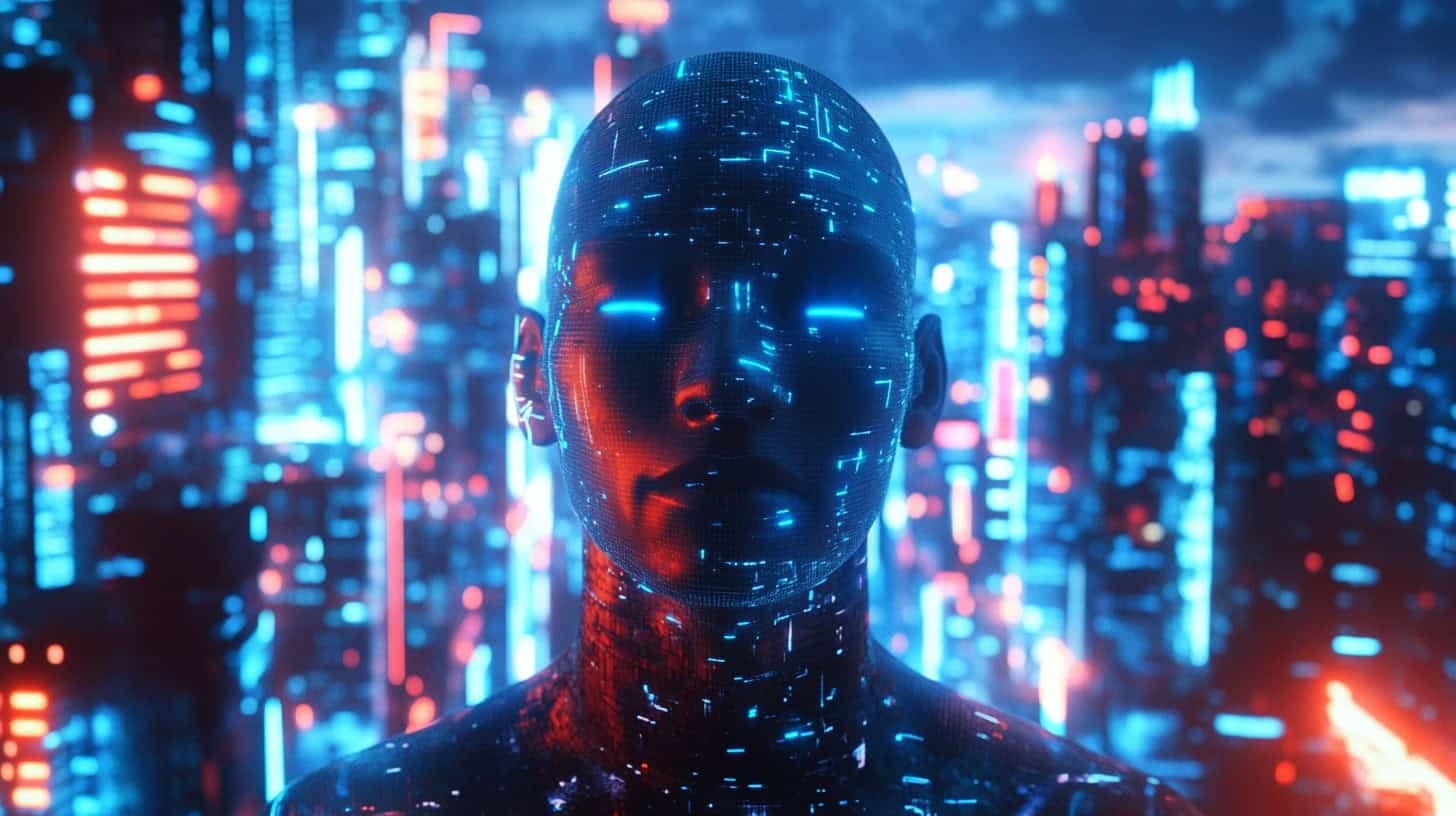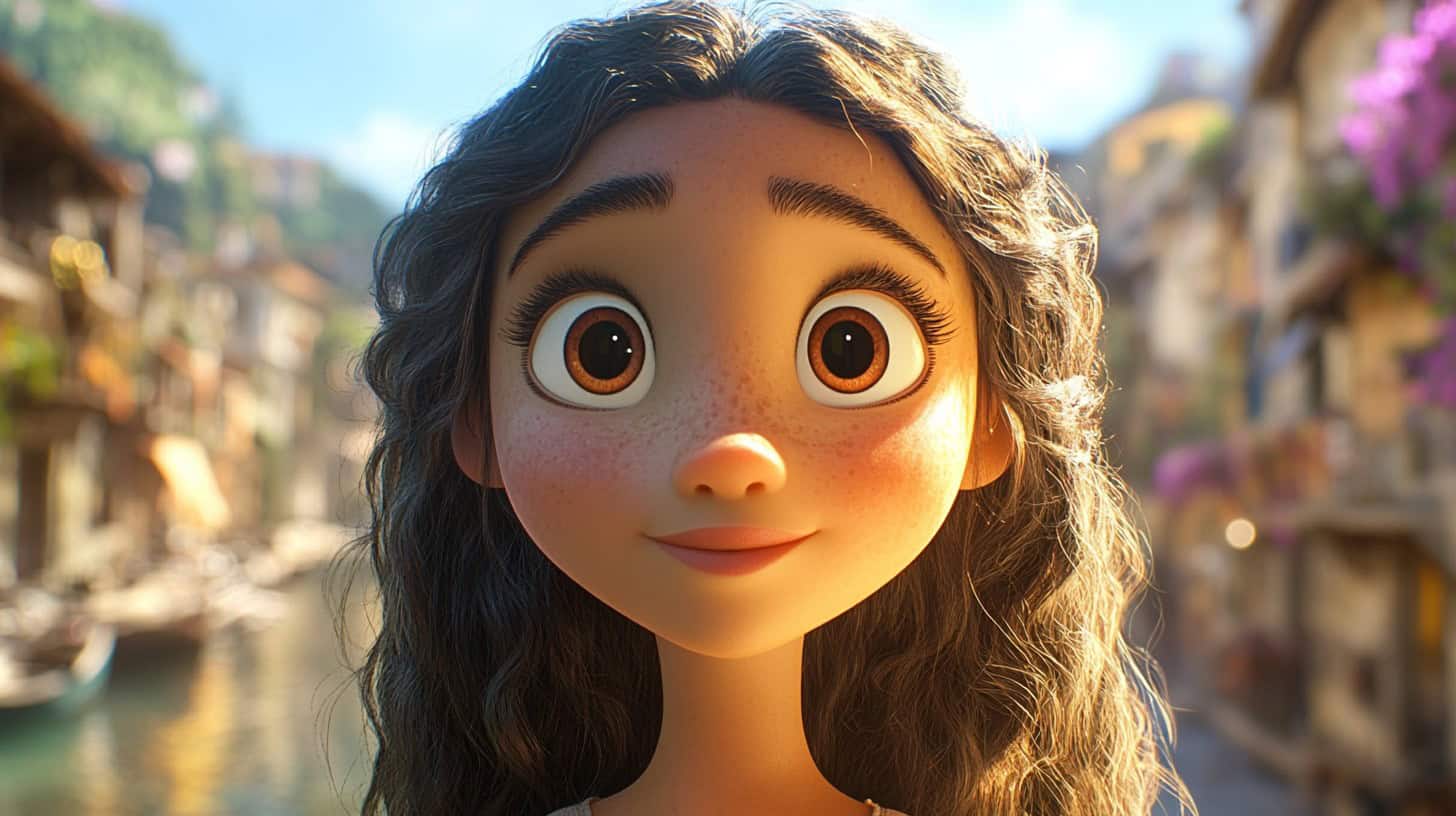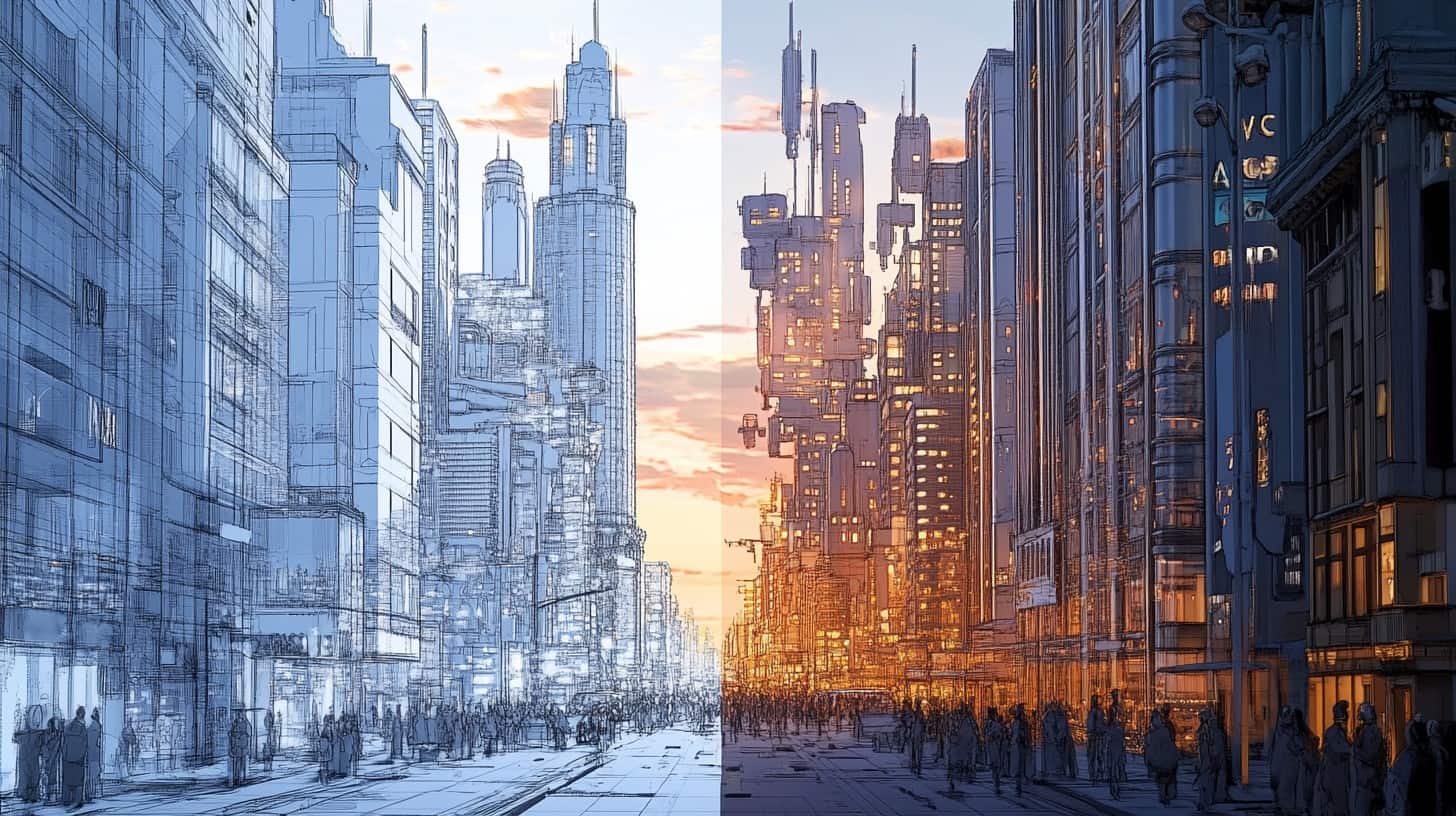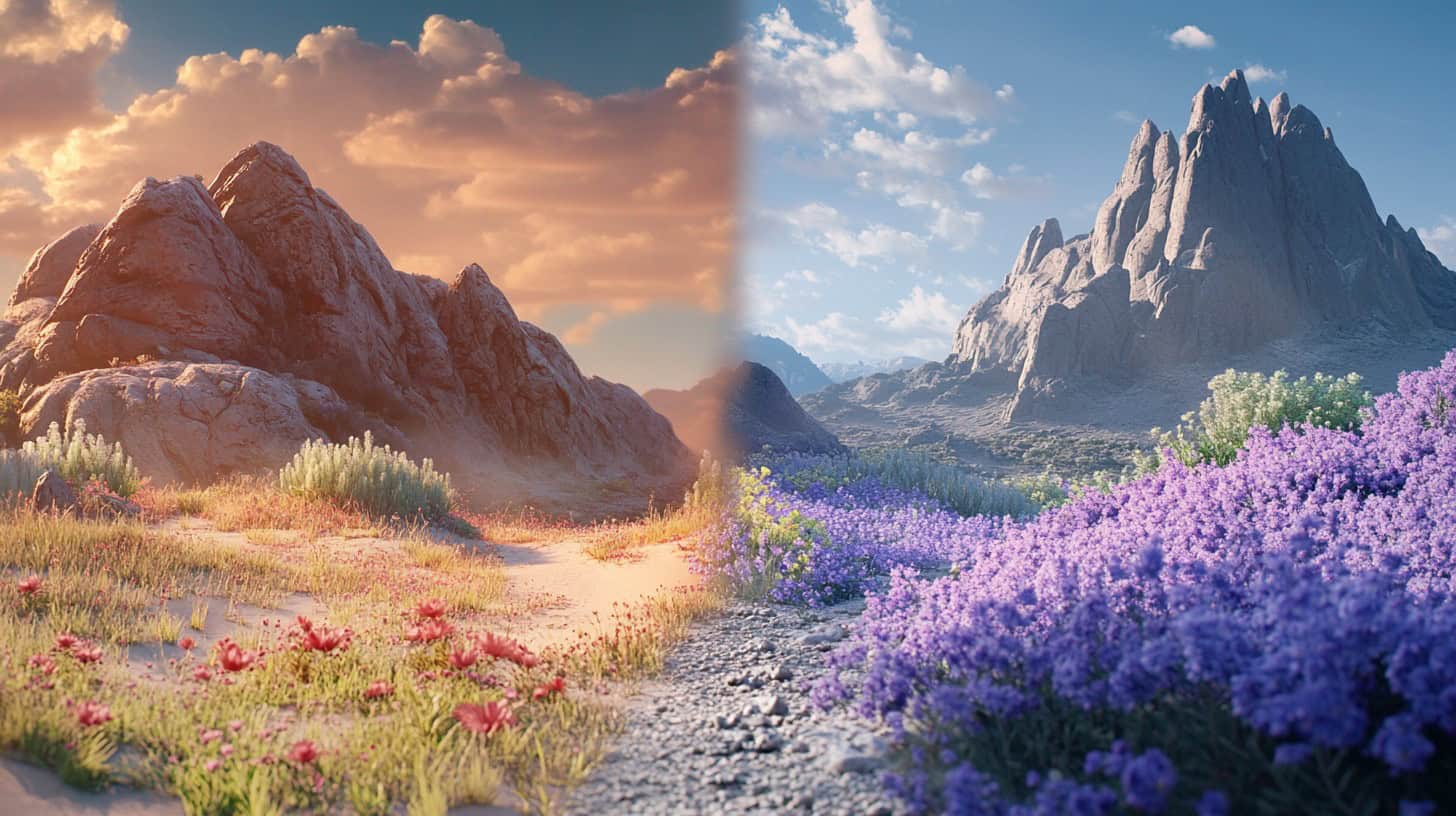Ever wondered why some animations look so different from others? It’s all about CGI vs hand-drawn animation. Did you know that one second of traditional animation requires 12 individual drawings? 3 This blog post will break down the five key differences between these two animation styles.
Ready to explore pixels and pencils? 1
Key Takeaways
CGI animation uses software like Blender and Maya to create lifelike 3D visuals, while hand-drawn animation requires 12 separate drawings for each second of footage.
Hand-drawn animation started in the early 1900s and gives artists full control over details, as seen in the 1937 film “Snow White and the Seven Dwarfs.”
Pixar’s “Toy Story” in 1995 sparked the CGI revolution, but some shows like “Avatar: The Last Airbender” (2005) began blending CGI with 2D animation.
CGI is faster and more cost-effective for big projects, while hand-drawn animation is labor-intensive and can be expensive for long productions.
CGI allows for easy revisions, but requires technical skills, whereas hand-drawn animation needs traditional artistic talent but is harder to change once drawn.
Table of Contents
Exploring CGI and Hand Drawn Animation

CGI and hand-drawn animation are two different approaches to creating moving pictures. Let’s take a look at what makes each one unique – from the digital techniques of CGI to the traditional appeal of pencil and paper.
Characteristics of CGI Animation
CGI animation dazzles with its lifelike visuals and mind-bending effects. It’s the secret sauce behind those jaw-dropping movie scenes and video game graphics that make you go “Wow!” Software wizards like Blender, Maya, and 3ds Max are the engines powering this digital magic.
These tools let animators craft hyper-realistic worlds, characters, and explosions that look so real, you’d swear they were filmed live. 1
But CGI isn’t just about pretty pictures. It’s a playground for innovation. Motion capture tech brings real actors’ moves to digital characters, making them move just like us. And get this – AI is muscling its way into the CGI party, automating tedious tasks and cranking up the realism dial even further.
As slots and games became more complex with smooth animations, CGI stepped up to deliver eye-popping graphics that keep players glued to their screens. Trust me, I’ve spent way too many hours lost in those mesmerizing CGI game worlds!
Characteristics of Hand Drawn Animation
Hand-drawn animation takes a lot of effort and care. It’s the original animation technique, starting in the early 1900s. Artists lean over light tables, pencils moving quickly on paper, making 12 separate drawings for a single second of movement.
That’s commitment! This approach gives animators complete control over every detail, expression, and subtle motion. It’s like creating a whole world… but with cartoon characters. 3
The outcome? A special, natural look that computer animation can’t quite match. Consider “Snow White and the Seven Dwarfs” from 1937 – the first full-length hand-drawn animated movie.
It’s an artistic masterpiece with personal flair. Each frame is artwork, full of character and appeal. Hand-drawn animation offers more creative options, allowing animators to stretch reality in ways that seem… well, enchanting. Next, we’ll look at how computer animation changed the animation industry. 2
The Development of CGI in Modern Animation

CGI in animation has evolved significantly since its early days. Toy Story, the pioneering film from Pixar Studios in 1995, started a revolution. Today, CGI is widespread – from big-budget movies to popular cartoons.
It’s more than just impressive visuals. CGI has transformed storytelling and character creation. 3
CGI isn’t just a tool; it’s a whole new language for storytelling. – John Lasseter
Here’s the interesting part: CGI isn’t replacing traditional animation. Instead, they’re working together! “Avatar: The Last Airbender” from 2005 was one of the first shows to combine CGI with 2D animation.
It was a bit rough initially, but by the time “The Legend of Korra” came out in 2012, the blend was seamless. And don’t forget “Attack on Titan” in 2013 – they used CGI for backgrounds, pushing boundaries even further.
It’s like watching art and tech collaborate… and we’re all invited to enjoy it! 4
Differences Between CGI and Hand Drawn Animation

CGI and hand-drawn animation are like night and day. They’re totally different beasts, each with its own quirks and charms. Let’s dive into what sets them apart – from how they look to how they’re made.
Visual Differences
CGI and hand-drawn animation are like night and day. CGI often aims for photorealism, with lifelike textures and lighting that can make you forget you’re watching animation. Hand-drawn stuff? It’s got that unmistakable artistic flair.
Think “Spirited Away” vs. “Frozen” – both stunning, but worlds apart visually.
“Spider-Man: Into the Spider-Verse” flipped the script on CGI. It ditched the ultra-realistic look for a chunky, comic book style. They even threw in hand-drawn details over the CGI characters! It’s like they took the best of both worlds and mashed ’em together.
This approach really shook things up in the animation world, proving CGI doesn’t have to mean boring photorealism.
Comparison of Production Time and Costs
Let’s dive into the nitty-gritty of production time and costs for CGI vs hand-drawn animation. Buckle up, geeks – we’re about to crunch some numbers!
| Aspect | CGI Animation | Hand-Drawn Animation |
|---|---|---|
| Production Time | Minutes to hours | Days to weeks |
| Labor Intensity | Less labor-intensive | Highly labor-intensive (24 drawings per second) |
| Cost Efficiency | More cost-effective for large projects | Can be pricey for lengthy productions |
| Revisions | Easier and quicker to modify | Time-consuming and potentially costly |
| Skill Requirements | Technical proficiency in 3D software | Traditional artistic skills |
CGI animation’s speed is a game-changer. It can whip up scenes in minutes, slashing production time. This efficiency translates to lower costs for big projects. Hand-drawn animation? It’s a different beast altogether. 7
Traditional methods demand 24 separate drawings for each second of footage. That’s a lot of pencil-pushing! This labor-intensive process eats up time and money. It’s why some shows, like “Attack on Titan,” turned to CGI to keep quality high within budget constraints. 7
Revisions in CGI are a breeze. Tweak a model, hit render, and voila! Hand-drawn revisions? Not so simple. Each change means redrawing frames – a time-sink that can blow budgets sky-high.
But here’s the kicker: CGI requires tech-savvy folks. You need animators who can wrangle 3D software. Traditional animation calls for raw artistic talent. Different skills, different costs.
MAPPA’s experience with “Attack on Titan” final season illustrates these trade-offs. They had just 8 months and limited CGI chops. Talk about a tight squeeze! It shows how production realities can force tough choices between techniques. 5
So, there you have it – the time and cost breakdown of CGI vs hand-drawn. Each has its place, depending on project needs, budget, and timeline. Choose wisely, fellow animation enthusiasts!
Flexibility and Control in Animation Techniques
CGI animation offers a level of flexibility that’s hard to beat. Want to tweak a character’s expression? No problem. Need to adjust the lighting in a scene? Easy peasy. With CGI, animators can make changes on the fly without starting over.
It’s like having a digital playground where you can move things around until they’re just right. 2
Hand-drawn animation, on the other hand, has its own charm. There’s something magical about the imperfections and unique style that comes with each artist’s touch. But it’s less forgiving when it comes to changes.
Once a frame is drawn, major alterations can mean redoing entire sequences. That said, some animators argue that this limitation forces more thoughtful planning and can lead to more creative solutions.
It’s a bit like choosing between a Swiss Army knife and a beautifully crafted paintbrush – both have their strengths, depending on what you’re trying to create. 7
People Also Ask
What’s the main difference between CGI and hand-drawn animation?
CGI uses computer-generated graphics, while hand-drawn animation relies on traditional, frame-by-frame techniques. Think Mickey Mouse vs. Shrek.
Which method is faster: CGI or hand-drawn animation?
CGI often speeds things up. It’s like using a chainsaw instead of a hand saw. But both need skill and time.
Can you mix CGI and hand-drawn animation?
Absolutely! Many animated films blend both. It’s like mixing peanut butter and jelly – sometimes it just works.
Do video games use CGI or hand-drawn animation?
Most video games, like World of Warcraft, use CGI. But some indie games still rock the hand-drawn look.
Which style costs more: CGI or hand-drawn?
It depends. CGI needs expensive software and computers. Hand-drawn needs lots of artists and time. Both can break the bank.
Are there any famous movies that use hand-drawn animation?
You bet! “The Princess and the Frog” by Walt Disney Animation Studios is a modern classic. It’s like finding a unicorn in today’s CGI world.
References
^ https://garagefarm.net/blog/understanding-the-difference-between-cg-and-cgi
^ https://www.linkedin.com/advice/1/when-should-you-use-traditional-hand-drawn-animation-b5uqc
^ https://blogs.libraries.indiana.edu/mediabeat/2024/03/12/the-evolution-of-animation-as-a-medium/ (2024-03-12)
^ https://www.researchgate.net/publication/372326044_What_Does_CGI_Digital_Technology_Bring_to_the_Sustainable_Development_of_Animated_Films
^ https://www.ncbi.nlm.nih.gov/pmc/articles/PMC9453061/



